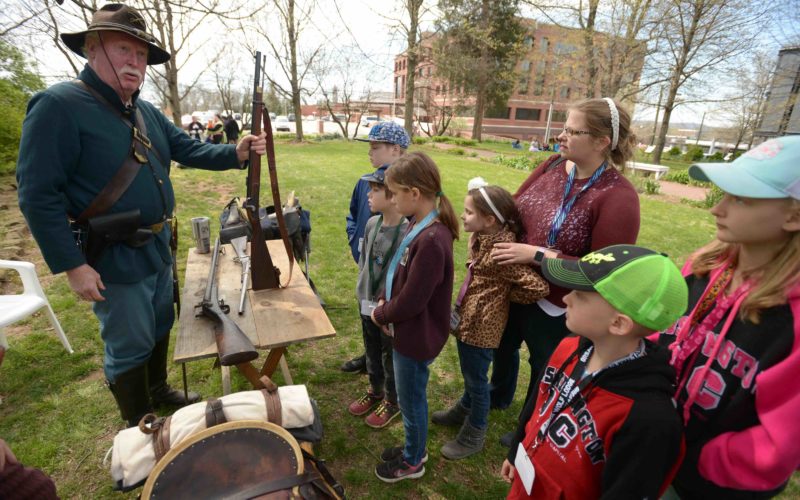Critical thinking part of the goal
AMANDA BANCROFT
Making Ripples
Without evidence and critical thinking, making a difference becomes murky and sometimes dangerous. Good intentions are a great starting place, but can only do so much to resolve problems. It’s not as fun as kittens and puppies, but the truth is, if you want to make a difference in almost anything, facts are friends. History is one way to learn how to uncover the truth and use data to decide the best way to tackle a modern problem like inequality or pollution.
David Cutler, in an Atlantic article titled “High School History Doesn’t Have to be Boring,” writes: “It’s not news that for over 100 years, history has been taught as little more than a callous exercise in regurgitation and rote memorization, with teachers rewarding how much information students can cram into their already stuffed heads.” He describes how some renowned teachers like Bruce Lesh are doing things differently. By uncovering evidence about what really happened in history, students practice critical thinking and create sound arguments. That’s a much-needed skill in an era of media-saturated minds driven to distraction by fake news. According to Lesh, quoted in the article: “My job is to teach you how to make arguments. Arguments are based on the application of evidence, and evidence is gained through analysis of information. That’s what we do. We look at historical problems. We build arguments about the questions that we created. We teach you ways to use evidence to support your argument.”
In the book “History Making a Difference: New Approaches from Aotearoa,” Katie Pickles writes: “Why care about the past? Why teach, research and write history? History at the service of nation and empire is no longer necessarily the objective. Instead, the answer to these questions often lies in the intention of ‘making a difference,’ of learning from the mistakes of the past and enabling a better day. But a better day for whom?” Too often, historical events are summarized in black and white terms with a familiar narrative based on politics. This is echoed in our aversion to “gray” when discussing current events. Truth, and history, are complicated.
History doesn’t just teach evidence-finding, though. It also teaches a tougher lesson: that of not knowing, when no evidence yet exists to tell us about something. Often we see people using “guess facts,” which is when a guess or assumption is stated and defended like a fact. It’s better to say we don’t know (yet). It’s better to know when someone else doesn’t really know, too. That’s because truth matters, not only for the sake of morality and our belief that lying is wrong, but for the sake of good science and making a difference using logic and not guesswork. Admitting what we don’t know helps people in many fields – medicine, non-profits, education, and others – avoid misleading or harming people and planet. This also paves the way to learning more about the unknown, and making a bigger difference in the future.
Amanda Bancroft is a writer, artist, and naturalist building an off-grid cottage for land conservation on Kessler Mountain. She and her husband Ryan blog about their adventures and offer a solar-hosted online educational center on how to make a difference with everyday choices at: www.RipplesBlog.org.










